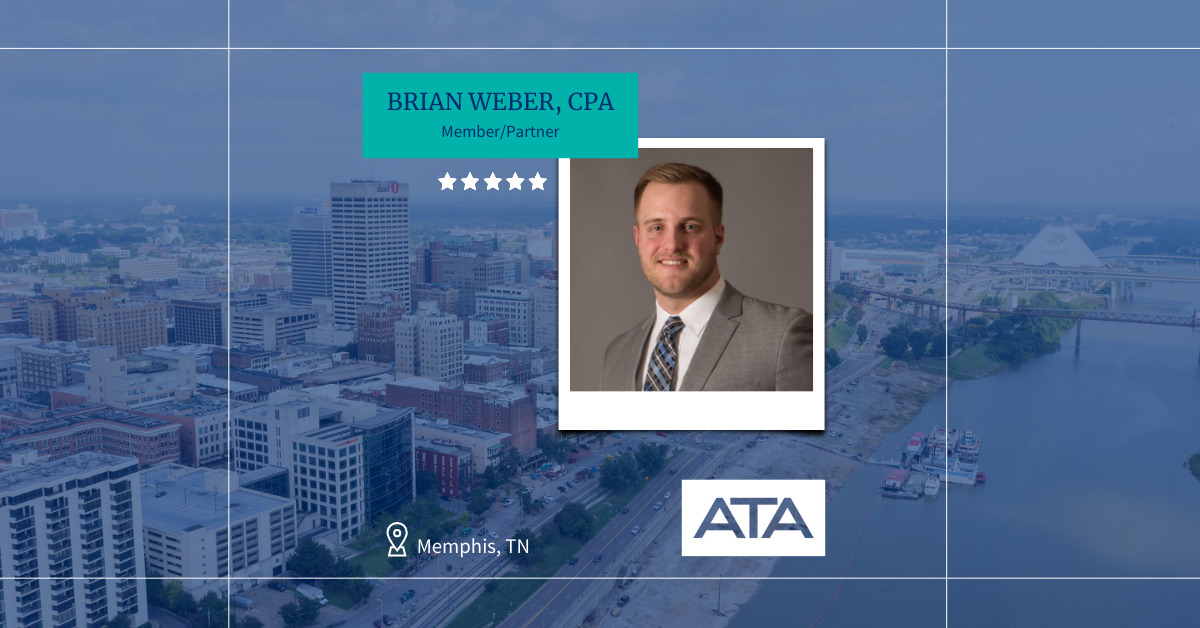By Rick Schreiber, CPA,CVGA, CGMA, M&AP | Advisory Practice Leader
Running a business today is more complex than ever. From economic uncertainty to talent shortages, business owners are navigating a minefield of challenges. In our recent client survey, many of you shared that you weren’t aware of all the ways ATA can support your business, and that you’re looking for more proactive advice. This article is designed to highlight some of the most common challenges we hear, and how ATA and its growing advisory services is helping clients navigate them.
- Financial Stress & Cash Flow Uncertainty
The Worry:
Business owners are constantly juggling cash flow, trying to make payroll, cover rising costs, and still turn a profit. Inflation, interest rate hikes, and supply chain disruptions have only added to the pressure. Many are unsure whether they’re pricing correctly, overstaffed, or missing opportunities to improve margins. The stress of not knowing if they’ll have enough cash next month or next quarter can be paralyzing. Without clear financial visibility, even strong businesses can feel like they’re flying blind.
Our Suggested Solutions:
- Fractional CFO services to improve forecasting and cash flow discipline
- Cost and margin optimization to uncover savings and improve profitability
- Strategic planning to diversify revenue and reduce financial risk
- Growing Revenue in a Crowded Market
The Worry:
Owners are feeling squeezed. Competitors are slashing prices, customers are more demanding, and digital disruption is changing how people buy. Many businesses are stuck in a cycle of flat growth, unsure how to break through. They may be relying too heavily on a few key clients or outdated sales tactics. The fear of stagnation or worse, decline is real. Without a clear growth strategy, even the best-run companies can lose ground.
Our Suggested Solutions:
- Growth advisory to identify new markets, products, or pricing strategies
- Digital advisory to enhance online presence and customer experience
- Sales process and CRM optimization to improve conversion and retention
- Attracting and Retaining Talent
The Worry:
The labor market has shifted and many business owners are struggling to keep up. Younger workers want more than a paycheck; they want purpose, flexibility, and growth. Meanwhile, experienced employees are being poached by competitors offering better benefits or remote options. Owners worry about losing institutional knowledge, training new hires, and maintaining morale. They know that without the right people, growth stalls, and culture suffers.
Our Suggested Solutions:
- HR advisory to improve recruitment, onboarding, and retention
- Compensation, benefits, and retirement plan design to attract and retain top talent
- Culture and engagement assessments to strengthen morale and loyalty
- Regulatory Complexity & Compliance Risk
The Worry:
From shifting tax codes to evolving labor laws and cybersecurity regulations, the compliance landscape is a moving target. Business owners worry about missing something critical, like a new reporting requirement or a data privacy rule that could lead to fines, audits, or reputational damage. Many don’t have the time or expertise to keep up, and they fear that one misstep could undo years of hard work.
Our Suggested Solutions:
- Regulatory compliance reviews and risk assessments
- Internal audit and controls advisory
- Tax advisory to navigate evolving federal and state rules
- Technology Disruption & Cybersecurity Threats
The Worry:
Technology is advancing faster than most businesses can adapt. Owners know they need to modernize but fear the cost, complexity, and potential for cyberattacks. They’re unsure which tools are worth the investment, how to train their teams, or how to protect sensitive data. The fear of a ransomware attack or system failure keeps many up at night. And without a clear digital strategy, they risk falling behind competitors who are already embracing automation and AI.
Our Suggested Solutions:
- Digital transformation and automation advisory tailored to small and mid-sized businesses
- Cybersecurity readiness assessments and employee training
- Strategic tech planning to reduce complexity and future-proof operations
Closing Thought
At ATA, our goal isn’t just to solve problems, it’s to be the partner who helps you seize opportunities, build resilience, and move forward with confidence, so you can sleep better at night. Let’s start the conversation today.




